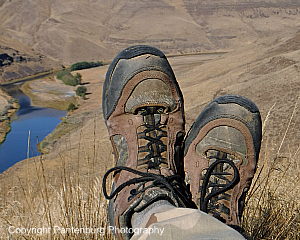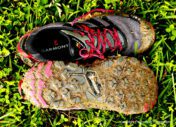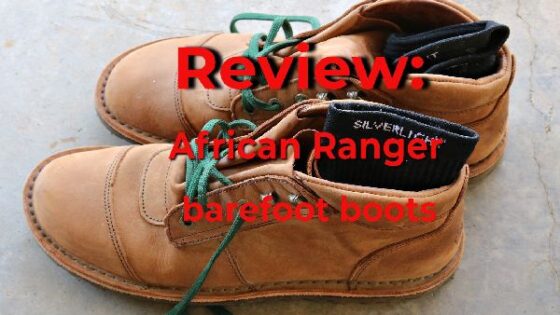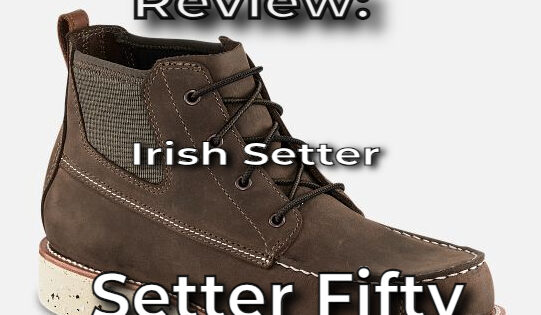by Mark Hedman
(Editor’s note: Survival Common Sense rarely publishes guest posts. This particular piece, though, was well-written and informative, and it can provide some useful information!)
Do I Need to Wear Hiking Boots? Or what?
This question is one that is often debated, and some people clearly prefer one or the other. You may want to wear sturdy hiking or tactical boots for better ankle support, while others prefer trail shoes because they’re lighter and allow you to traverse all kinds of terrain nimbly. People also hike barefoot or in hiking sandals if they’re in a hotter climate.
Shoes or Boots?
The answer to this question is simple. Shoes and boots protect your feet from debris and rocks on the hiking trail. Boots are great for people who want more ankle support to keep you from rolling an ankle and spraining it. They are also good on muddy, rocky, or wet trails.
If you wear trail running shoes in these conditions, you’ll end up with muddy, wet feet, which certainly doesn’t enhance your hiking experience. While boots are heavier, you can scurry through with maximum protection in extreme trail conditions. Whatever footwear you choose, make sure that it keeps your feet dry, is lightweight, and the soles provide a good grip.
Here are some tips to help you find the right footwear for hiking. First, know your size, and that’s a bit more than just the number. Find out the width, length, and arch length of your foot. Many large outdoor stores have specially calibrated devices to take these measurements. Knowing your foot volume will also help you find a shoe that fits your specifications, and a specialist at these stores can measure this. Many stores have directions and sizing charts that can help you find out some of these measurements yourself if it’s not possible to get into a store.
Many people purchase shoes online without trying them on, and you can do that, but this might be one pair of shoes that you don’t want to buy without trying them on. When you do try boots or shoes on, try them on at the end of the day because your feet gradually swell a little after the day’s activities. By waiting until your feet are at their largest, it will prevent you from getting shoes too small for your feet.

If you have orthotics, bring those along when shopping for footwear. When trying on shoes, spend some time in them walking around the store if possible. Try going up and down steps and walk on a couple of different surfaces.
Also, try them on for more than a couple of minutes. These are shoes you’ll be spending a lot of time in, so it’s important to really get a good feel for them. Don’t simply try on hiking boots with the athletic socks you happen to be wearing that day. Bring along the wool or synthetic crew socks you plan to wear with them.
Muck Boot Company: Get 25% off now on Web Specials with code TAKE25
Trail Running Shoes vs. Hiking Boots
Several factors impact the kind of footwear you use on the trail. How, where, and when you hike can help you choose the best boot or shoe for hiking. Today, many hikers prefer trail runners because of how comfortable and lightweight they are, as well as the available design choices. Hiking boots still have a lot of great features to consider.
Ask yourself these questions when trying to pick the right footwear for your next hiking adventure:
- Are you a new hiker? New hikers need time to adapt to wearing a pack and remaining in an upright position on the trail. Hiking boots have wide, thick soles that create a stable platform for walking on rugged terrain.
- Does your body type require more support? Everybody has different body types or areas that require more support. If you need more supportive footwear, in general, and then add a heavy pack to carry, you may want to wear hiking boots for more stability. If you have a strong core and few problems with strength and stability, then a sturdy trail shoe may be enough.
- What type of terrain are you hiking? Rougher terrains require sturdier boots that can hold up to extensive wear and tear. Their thick soles take the brunt of the shock from rocks, roots, and debris, to save your feet from injury or pain. If your hike is on a forest trail without a harsh landscape, then trail runners are fine to wear. The weather also affects your choice. If it’s wet or cold, then boots provide warmth and protection against extreme weather conditions. However, there are waterproof trail shoes available as well.
- What’s your hiking pace? Lightweight trail running shoes allow you to keep a brisk pace. If you need to maintain a certain number of miles every day, then these shoes are for you. You’ll likely need several pairs if you hike regularly. Hiking boots are fine for slow, steady journeys where a little extra weight and bulk won’t slow you down.
Traction Comparison
Trail runners provide a minimal grip, but off-trail or rugged models have similar traction to hiking boots. Some designs have sticky rubber soles for more grip on logs and wet rocks. Hiking boots have thick grippy soles that offer traction when hiking rugged trails, but they are heavier than trail shoes.
Hiking Sandals
Hiking sandals aren’t the type of footwear that you want to wear regularly on the trail, but there are times when they’re useful. Sandals are excellent for really hot days or if you must wade through streams. The best time to use hiking sandals is on hot summer days or in areas with a hot climate and on trails that don’t have much debris.
Pros and Cons of Hiking Boots
Pros
- Reliability
- Stability
- Warm for hiking in the winter
- Excellent traction
- Ankle and foot protection
- Durability
Cons
- Cumbersome and heavier
- Need to be broken in
Pros and Cons of Trail Running Shoes
Pros
- A variety of options for traction
- Breathability that helps keep feet drier
- Lightweight
- Shorter break-in period if one at all
- Cooler
- Versatile
Cons
- Not as durable; need to be replaced more often
- Not as supportive as hiking boots
Truthfully, if you hike regularly, you’ll probably own more than one pair of hiking shoes, sandals, or boots because you’ll likely hike in more than one terrain or climate. If you’re a new hiker, narrow down your selection by the hiking pace you plan to set, the terrain you’ll be hiking in, and the support your body needs to be comfortable walking long distances in the backcountry.
Mark Hedman serves as the CEO for LA Police Gear. Mark oversees a little bit of everything, from product development to walking the dogs from our Valencia, CA headquarters. Before joining LA Police Gear, Mark was just a kid that was very interested in programming and e-commerce. Starting from the bottom, he worked his way up through all stages of the company. Mark loves animals and the outdoors. He tries to spend as much time at the range as possible or hanging out with the pups.
Please click here to check out and subscribe to the SurvivalCommonSense.com YouTube channel – thanks!





Leave a Reply